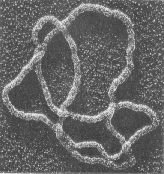Monsters II
Integer points in higher dimensional spaces appear in nice geometric realisations of operad polytopes, as we saw for the Stasheff associahedron. To deal with a variety of lattices in 24 or 26 dimensions we would need a pretty good handle on higher operad theory. In the last post a variety of interesting polytopes was shown. Loday has worked on lattice type realisations of associahedra and permutohedra. Now there are just so many more polytopes to look at.
Recall that Borcherd's proof of Monstrous Moonshine used a vertex algebra for the Monster group. These conjectures originated in some remarkable observations matching the coefficients of the number theoretic j-function (which turned up in our study of ribbon graphs and Grothendieck's dessin d'enfants) to numbers in the character table for the Monster group. People who study these things are interested in double loop spaces, which are what 2-operads are about. That is, one of the requirements of a definition of weak n-category is that the groupoids be capable of modelling homotopy n-types. This is what the table in the last post is secretly about. A 2-operad component is labelled not by an ordinal n, which is a 1-level tree on n leaves, but by a 2-level tree.
Ronan also mentions the first coincidence leading to the Moonshine conjectures. Ogg was looking at certain subgroups of the modular group. The question was, when did these groups, indexed by a prime p, yield genus zero as opposed to higher genus surfaces for the action on the hyperbolic plane? He found the precise allowable primes, namely 2,3,5,7,11,13,17,19,23,29,31,41,47,59,71 which are precisely the prime factors in the size of the Monster group.
















